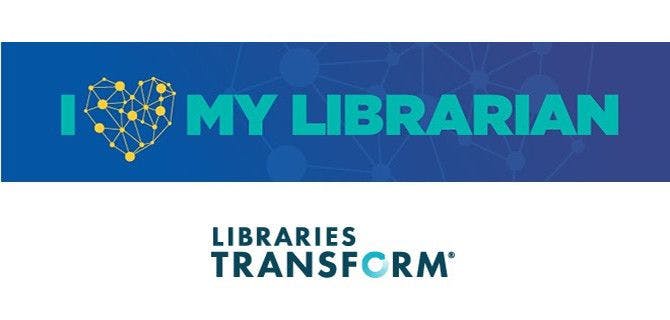As we celebrate National Library Week, an American Library Association initiative highlighting the transformative power of libraries, we would like to take a look at how librarianship has transformed in recent years. Librarians have always played an essential role in research and information services, providing scientists with key information and helping students find what they […]

As we celebrate National Library Week, an American Library Association initiative highlighting the transformative power of libraries, we would like to take a look at how librarianship has transformed in recent years.
Librarians have always played an essential role in research and information services, providing scientists with key information and helping students find what they need. However, the modern librarian’s role has evolved into one of the most multifaceted jobs on a university campus. Scientific librarians, in particular, are tasked with engaging their patrons with the latest resources and technological developments, which is not an easy feat given how quickly things change.
To provide some perspective on what it’s like being a 21st century librarian, we spoke with four chemistry librarians on their views of their transforming roles. To read each librarian’s full Q&A, visit the links in each response.
How has your job changed over the years? What is it like being a 21st-century librarian compared to the more traditional image most people have in their minds?
Luti Salisbury (Distinguished Professor and Librarian, the University of Arkansas): Librarians are more embedded with their faculty, researchers, and students. We actively seek out opportunities to understand their needs and to connect them with the subscription and other appropriate resources. We assist patrons to understand the scholarly communication ecosystem and the issues surrounding open access and open educational resources. Librarians play an integral role in keeping up with the federal requirements for open access and data management and provide just-in-time support to help faculty and researchers manage them. We also play an important role in helping faculty and researchers showcase their research activities in a variety of ways. These include creating researcher IDs and/or ORCID profiles on their behalf and helping build our institutional repositories.
Lisabeth Chabot (College Librarian, Ithaca College): The move from ownership of content to curating access to content has impacted all areas of library work. I like to say that we have moved from a “preserve and protect” model to one of enhancing the discoverability of library resources. Most academic libraries are challenged to continue to build collections in view of flat funding and escalating resource costs. Resource sharing and consortial collection development projects have taken on greater significance.
How do the changing needs of researchers and students impact your work?
Donna Wrublewski (Librarian for Chemistry, Biology, and Biological Engineering, California Institute of Technology): I’ve become an expert in data management plans, data repository requirements, and the NIH PubMed Central deposit requirement very quickly. You don’t know what is around the next corner that will be affecting how researchers do their work. Increasingly, it is becoming less about “can we purchase this resource” – although still important, the dire state of library budgets is now common knowledge at least on our campus – and more about “how can you connect me with the information I need”. That information could take the form of a dataset, a book, a funding requirement, a campus resource, or a community hive mind. So it is important to be engaged professionally and as aware as possible of new resources or techniques in the field.
What are some emerging trends in the library world?
Ye Li (Scholarly Communications and Instruction Librarian, Colorado School of Mines): For academic libraries, data/information management, sharing, and preservation continue to be fast-growing areas. Reproducible research is one of the re-energized areas for librarian involvement due to advances in data science and technology. Under this umbrella, many sub-areas like electronic record-keeping, digital workflow, preservation and dissemination of reusable data and information, and metrics measuring research impact will move forward fast in the next few years.
The current focus may still be initiating services in the data management and sharing areas. But I believe the future lies in establishing partnerships with researchers, students, and faculty throughout the research and learning lifecycle through various types of involvement in the data and information workflow.